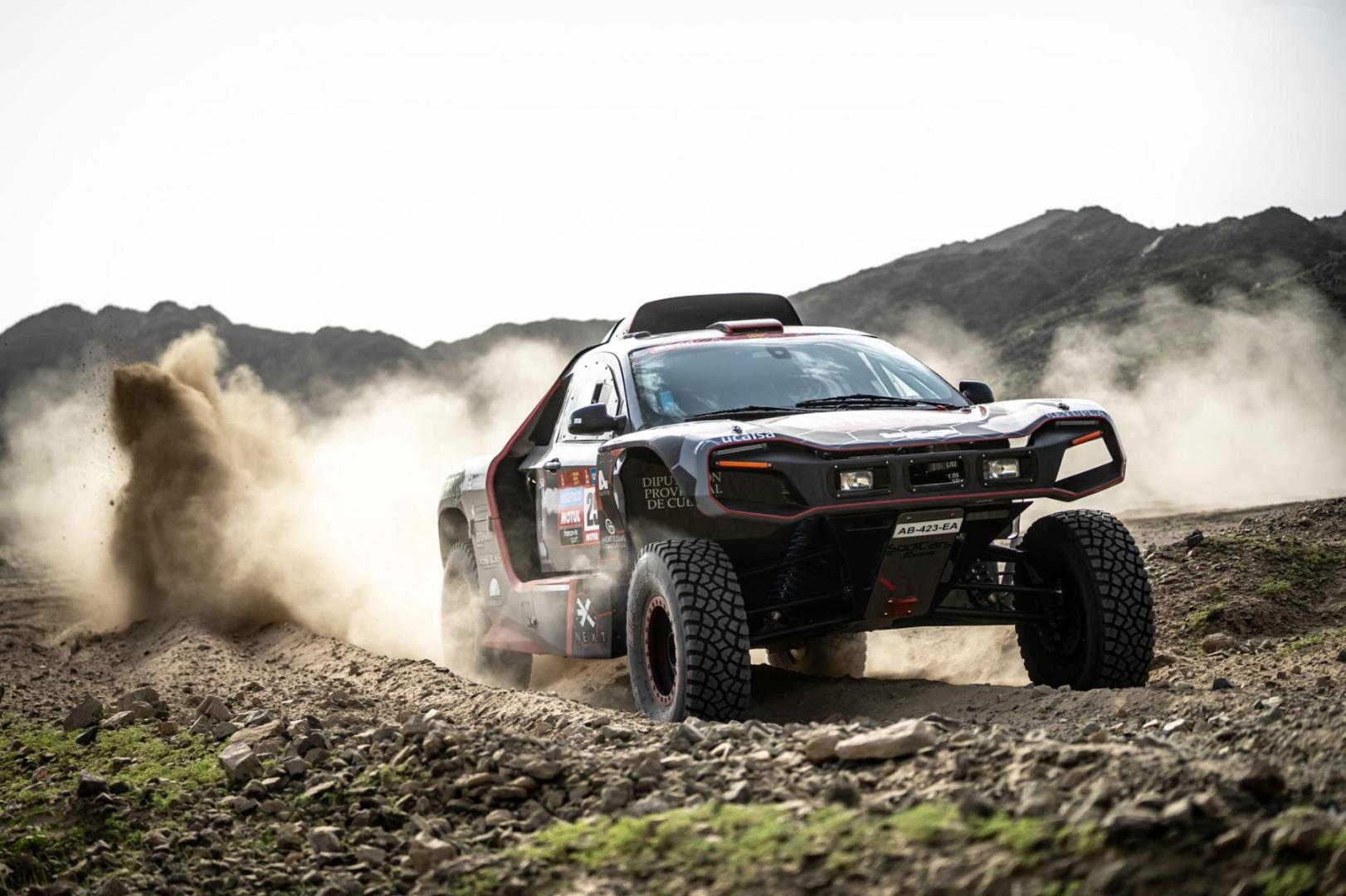Steel 3D printing technology applied in a Dakar Rally vehicle
Steel 3D printing technology applied in a Dakar Rally vehicle
The 3D printing technology used by ArcelorMittal at its R&D&I Centre, combined with the smart design algorithms of Nebrija University, made it possible to develop various components of this Dakar Rally car. Nebrija University students undertook the redesign and technological improvement of a car of the Sodicars team that took part in the 2023 Dakar Rally in the top-class category (T1).
As a result, a new part that connects the side box of the car with the bargeboard, achieving a 20% weight reduction below the limit set, was 3D printed at the ArcelorMittal laboratory.
Pedro Prendes, Head of Process at ArcelorMittal R&D: “Our participation in this project constitutes a new challenge within the framework of our Partnership Programme. It is an exciting project in which we will be able to see yet another 3D-printed steel part deployed in the extremely harsh conditions of the Dakar Rally, which is in itself a real challenge.”
ArcelorMittal operates a technological innovation centre focused on the development of various cutting-edge technologies, including 3D printing, artificial intelligence, nanotechnology and green energy. Nebrija University integrates artificial intelligence and generative modelling techniques – smart design or generative design – to develop products that can contribute to enhancing the added value that ArcelorMittal provides for the automotive world. The partnership between the two parties began some years ago, with the development of a motorbike frame entirely produced through 3D printing, which demonstrated that steel could offer a lighter solution than aluminium (a 25% weight reduction was achieved in this structural part). This was the starting point of the collaboration between both entities, with the long-term objective of introducing an ever-increasing range of printed components in the automotive sector and consolidating this technology.
The Dakar Rally is the world’s toughest automotive competition from a mechanical standpoint and, therefore, constitutes one of the best environments for the deployment of disruptive technologies, such as 3D printing. Nebrija University reached an agreement with Sodicars, a vehicle manufacturer and racing platform with more than 11 years’ experience in automotive competitions and in the Motorsport world. The agreement focuses in particular on the redesign of and technological improvements to Sodicars’ BV2 vehicle. Nebrija University leads the technological development and technical management aspects of the project with a team of undergraduates and master’s students from Nebrija Polytechnic. Manolo Plaza, who has taken part as a driver in more than 14 editions of this rally, and his daughter Mónica Plaza piloted the improved vehicle during the competition.
In the context of this technological challenge, the teams from Nebrija University and ArcelorMittal laid the bases and provided the necessary resources to enable the use of 3D printing in the development of some components of the car to become a reality. The collaboration focused on the development of the parts supporting the car’s sidepods. Although these components have a very minor structural function, due to their position on the car they are very exposed to impacts or the possibility of being hit by stones. Moreover, as they are located in one of the main aerodynamic flow channels of the car, it was critical that the final component should have a limited area of flow resistance. These requirements conditioned the design of the part as regards its design space. ArcelorMittal’s team contributed all its design technology as well as its know-how in 3D printing technologies to develop a lightweight component that met these aerodynamic constraints. The result is a part with a very organic shape, weighing barely 800 grams – 20% below the limit set – that connects the side box of the car with the bargeboard.
The component, created by engineers specialising in design, computational analysis and manufacturing processes, was printed at the facilities of the R&D&I Centre in Avilés using laser powder bed fusion (LPBF) technology, in view of its geometry and resolution requirements. To produce the component, the R&D&I team used a grade 17-4PH steel alloy which was subsequently heat-treated.
The design process took into account the points where the component is fastened to the vehicle, the aerodynamic requirements and the simulation of forces it is exposed to, in order to optimise the design space. The joint work of the various R&D&I teams made it possible to produce the final printed parts within three weeks after receiving the case study. Short development and production cycles for new components constitute a competitive advantage as they make it easier to adapt to changes and new requirements for the application considered, in this case, in racing vehicles.
Training in real projects
The Nebrija to Dakar project was born to take this sporting challenge to a training and technological dimension. It is conceived as a real university project, where students are the protagonists and central pillar in the redesign and technological improvement of a car for the 2023 Dakar Rally. Thus, the Nebrija to Dakar project aims to contribute to the personal and professional growth of the students and to implement the ‘learning by doing’ philosophy as an academic format to prepare future automotive professionals. In this context, the partnership with ArcelorMittal has enabled students to gain a more in-depth insight into 3D printing technology, and opens a whole range of possibilities for the design of the new components planned for the car.
Steel Powders are used in multiple industries and applications.
Find out how ArcelorMittal Powders can help you boost your productivity!
25 February 2022

